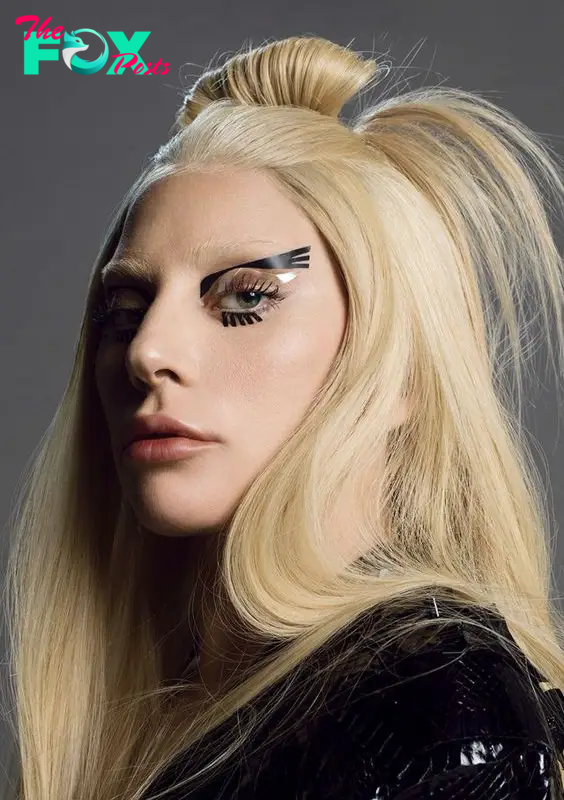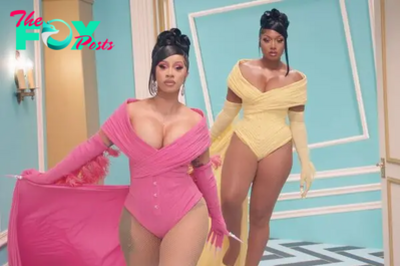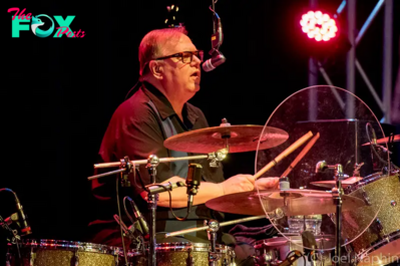
In the glittering constellation of pop music, few stars shine as brightly or as multifaceted as Lady Gaga. From her meat dress days to her jazz duets with Tony Bennett, Gaga has consistently defied expectations and pushed boundaries. But perhaps her most impressive feat isn’t visible on stage or in her outrageous outfits – it’s happening behind the scenes, in the recording studio.
For years now, Lady Gaga has been quietly revolutionizing her creative process by taking on the role of producer for her own music. It’s a move that’s allowed her to exert unprecedented control over her sound and image, and it’s transformed her from a pop sensation into a bona fide musical auteur.
“I’ve always been hands-on with every aspect of my career,” Gaga told me during a rare sit-down interview in her home studio, a space that looks like it was decorated by a glam rock alien with a penchant for crystal chandeliers and vintage synthesizers. “But producing my own music? That’s where the real magic happens.”
The transition didn’t happen overnight. Gaga’s early albums, while undeniably successful, were largely shaped by established producers like RedOne and Fernando Garibay. But as her star rose and her confidence grew, so did her desire to take charge of the entire music creation process.
“It was like I had all these ideas in my head, but I was relying on other people to translate them,” she explained, absentmindedly twirling a strand of her platinum blonde hair. “I thought, why can’t I be the one to press the buttons and turn the knobs?”
And so, armed with her innate musical talent and a determination to learn the technical aspects of production, Gaga set out to become her own producer. It wasn’t always easy – she recalls spending countless hours watching YouTube tutorials and pestering engineer friends with questions – but the payoff has been immense.
Now, when Gaga enters the studio, she’s not just the artist – she’s the captain of the ship. From the initial songwriting sessions to the final mix, her fingerprints are on every aspect of the music.
“It’s like being a painter who finally learns how to mix their own colors,” she said, her eyes lighting up with enthusiasm. “Suddenly, you have access to shades and hues you never even knew existed.”
This hands-on approach is evident in every track she produces. Take “Stupid Love,” the lead single from her 2020 album “Chromatica.” The song’s pulsing beat and soaring chorus are pure Gaga, but it’s in the details where her production prowess really shines. The way the synths swirl and build, the precise placement of each vocal ad-lib, the subtle shifts in the drum patterns – these are the marks of an artist who understands not just how to perform music, but how to construct it from the ground up.
But Gaga’s role as a producer extends far beyond just twiddling knobs and adjusting levels. She’s deeply involved in the songwriting and composition process, often starting with a simple melody or chord progression and building entire worlds around it.
“Sometimes I’ll wake up in the middle of the night with a tune in my head,” she said, miming the act of scribbling notes. “By morning, I’ve got a whole song mapped out – lyrics, arrangement, production ideas, everything.”
This doesn’t mean she works in isolation, however. Gaga is quick to praise her collaborators, from co-writers to session musicians. “Music is always a conversation,” she insisted. “Even when I’m producing, I’m constantly bouncing ideas off other people. It’s about finding that perfect balance between your vision and the input of others.”
One area where Gaga’s production skills really come into play is in sound engineering and mixing. She’s developed a keen ear for the technical aspects of music production, able to identify and manipulate the minutiae of a track in ways that might escape less experienced producers.
“I love getting into the nitty-gritty of a mix,” she said, her eyes gleaming with a mix of excitement and mischief. “Adjusting the EQ on a snare drum, playing with reverb and delay, layering vocals in just the right way – it’s like solving a beautiful puzzle.”
This attention to detail is evident in tracks like “Rain On Me,” her collaboration with Ariana Grande. The song’s pristine production showcases Gaga’s ability to create a sound that’s both radio-friendly and sonically adventurous, with each element carefully placed to maximum effect.
But Gaga’s producer role doesn’t stop at the music itself. As an artist known for her visual flair, she’s deeply involved in the creation of music videos and live performances, ensuring that the visual elements align perfectly with the sonic landscape she’s created.
“For me, music isn’t just about what you hear – it’s a full sensory experience,” she explained. “When I’m producing a track, I’m already envisioning the video, the costumes, the staging. It all has to work together to tell a cohesive story.”
This holistic approach to music creation is perhaps best exemplified by her Las Vegas residency, “Enigma.” The show is a tour de force of music, visuals, and storytelling, with every element carefully crafted to reflect Gaga’s artistic vision. From the setlist to the elaborate stage design, her producer’s touch is evident throughout.
Of course, being an artist-producer comes with its own set of challenges. The music industry is notoriously complex, and navigating the Business side of things while maintaining creative control can be a delicate balancing act.
“There are definitely moments when I wish I could just focus on the music and let someone else handle all the other stuff,” Gaga admitted with a wry smile. “But at the end of the day, I know that having my hands on every aspect of my career is what allows me to create authentically.”
This level of involvement extends to marketing and promotion as well. Gaga is known for her innovative approach to album rollouts and social media campaigns, often using her platform to create immersive experiences for her fans that go far beyond just releasing singles.
“I see marketing as an extension of the creative process,” she said. “It’s not just about selling albums – it’s about creating a whole world for the music to live in.”
The impact of Gaga’s transition to self-production on her career has been profound. Critics and fans alike have noted a marked evolution in her sound, praising the depth and complexity of her more recent work.
“There’s a confidence in her latest albums that wasn’t there before,” noted music critic Alex Ross. “You can hear an artist who’s fully in control of her craft, pushing herself in new directions while still maintaining that essential ‘Gaga-ness’ that made her a star in the first place.”
Indeed, comparing Gaga’s self-produced work to her earlier albums reveals a clear artistic growth. While her debut “The Fame” was a collection of undeniably catchy pop hits, albums like “Joanne” and “Chromatica” showcase a more nuanced, personal sound that reflects Gaga’s increased creative control.
“I love all my albums, but there’s something special about the ones I’ve produced myself,” Gaga reflected. “They feel more… me, if that makes sense. Like I’m finally able to translate what’s in my head directly into the music without any filters.”
As our interview wound down, I couldn’t help but ask about the future. What’s next for Lady Gaga, the pop star producer?
“Oh, honey, I’m just getting started,” she said with a laugh that managed to be both self-deprecating and slightly menacing. “I’ve got so many ideas, so many sounds I want to explore. The beautiful thing about producing is that the possibilities are endless.”
And with that, she turned back to her mixing console, already lost in the world of her next creation. As I watched her work, adjusting levels and adding effects with the precision of a master craftsman, I couldn’t help but feel like I was witnessing the future of pop music being born.
Lady Gaga has always been a transformative figure in the music industry, constantly pushing boundaries and redefining what it means to be a pop star. But by taking on the role of producer, she’s not just changing her own music – she’s potentially changing the entire landscape of pop production.
In an industry that often relegates women to the role of performer rather than creator, Gaga’s hands-on approach to music production is nothing short of revolutionary. She’s proving that artists – particularly female artists – can and should have a say in every aspect of their music creation.
As we look to the future, it’s clear that Lady Gaga’s iNFLuence as a producer will continue to grow. Whether she’s crafting chart-topping pop hits, experimenting with new genres, or collaborating with other artists, one thing is certain: the music will be unmistakably,










































